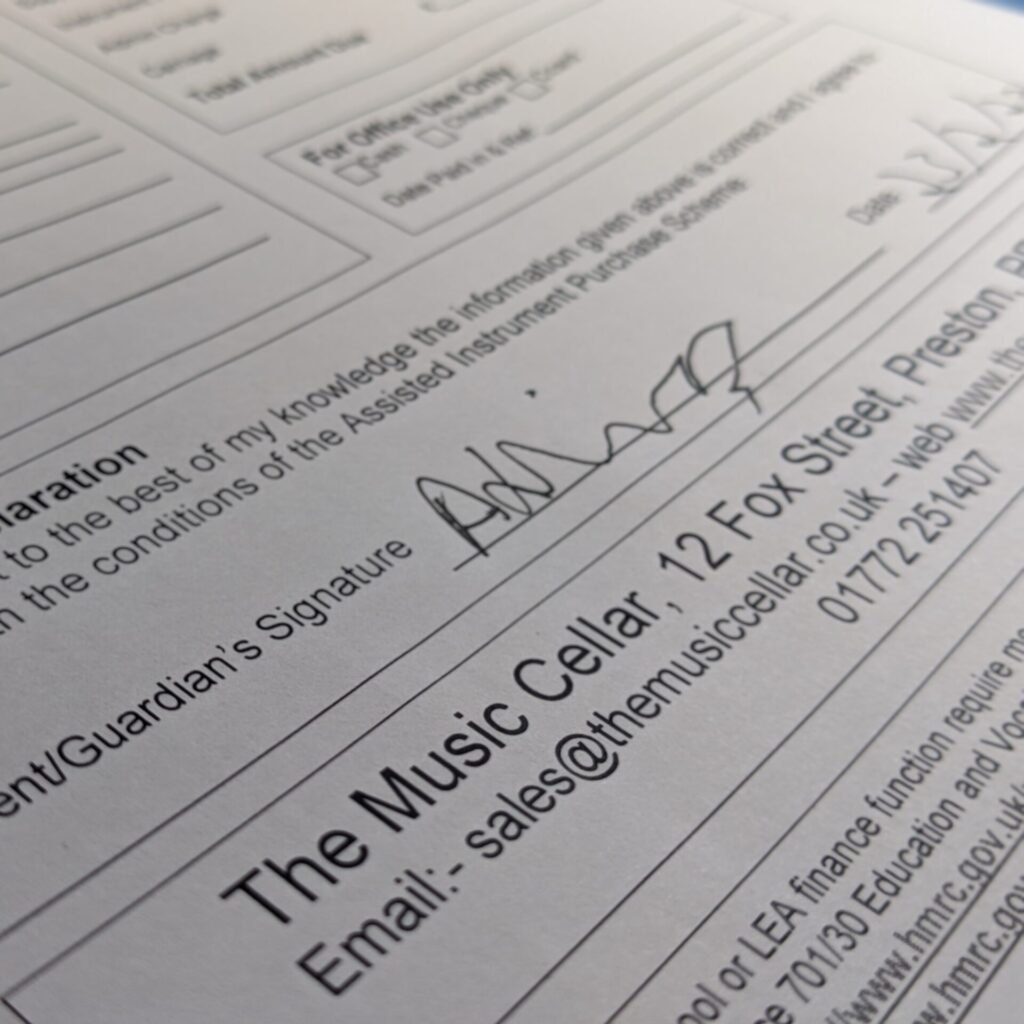Assisted Instrument Purchase Scheme
If you want to find out how to buy instruments at Educationally discounted price – AND save the VAT, we can help.
- First, check with your School or Music Centre that they operate the ‘Assisted Instrument Purchase Scheme’.
- Come and see us to hand pick your own instrument or call and reserve an instrument.
- After selecting an instrument, give your details and your payment to the School/Music Centre for them to complete their details and send the official purchase order to us. (Email us at sales@themusiccellar.co.uk, or click the “Contact us” button below.)
- The instrument will then be dispatched to the School/Music Centre at no extra charge.
- Finally, you collect your chosen instrument from your School/Music Centre.
Require more information? Read on.
The Assisted Instrument Purchase Scheme enables pupils having music lessons at LEA-maintained schools to purchase musical instruments without paying VAT.
However, this is a voluntary scheme and not all schools, music services/authorities will participate. (Hereafter called ‘schools.’) This guide is designed to explain the scheme’s rules and procedures to both parents and schools, with the intention of helping as many pupils as possible to benefit.
Contact Us

How does the scheme work?
- Once the parent/pupil has chosen an instrument and supplier, they should ask the school to place a formal order with the instrument retailer.
- The parent pays the school the ex-VAT price for the instrument plus any administration charge.
- The retailer supplies the instrument to the school.
- The school can reclaim the VAT on the instrument in the usual way. (Local authorities are refunded and VAT they incur in delivering their non-business statutory activities).
- The school then gives the instrument to the pupil.
What are the rules?
- The general conditions that the student and school must comply with no benefit from the scheme are as follows:
- The student must be at an LEA maintained school
- The School (or LEA) must place an order for the instrument.
- Take delivery and be invoiced (enabling them to recover the VAT)
- The transaction between the student and school (or LEA) must take place on school (or LEA) premises in a room that is normally used for teaching.
- The instrument must be appropriate to the student’s needs and ability.
- The instrument must be portable and taken to school (or LEA premises) on a regular weekly basis for use during lessons (from either the school or local authority’s education department).
- The LEA must sell the instrument to the student at or below cost.
- Pupils of independent schools would not ordinarily be able to benefit form the scheme – unless the student receives regular tuition form the local authorities music service.
Operation of the AIPS scheme
The onus is on the LEA to ensure they comply with all the VAT legislation and that all AIPS sales are transacted correctly according to the rules stipulated. For this reason, the operation of the scheme may vary slightly from area to area in order that individual LEA’s internal controls are complied with.
In most instances, schools order directly with suppliers but, in some LEAs’ the Music Service or a dedicated administration function deals with all AIPS transactions centrally. O such instances, your school or music teacher should know how to take advantage of the scheme.
In addition, some LEAs make a small administration charge to parents for processing the transaction, which obviously involves an amount of work for their school and education finance department.
More Information
If your school or LEA finance function require more information on the scheme, this can be obtained from VAT Notice 701/30 Education and Vocational Training (January 2002). This can be found at https://www.gov.uk/hmrc-internal-manuals/vat-government-and-public-bodies/vatgpb7825
Customs and Excise have confirmed that the information in this leaflet appears to be in the spirit of the scheme.
The signature provided on the image above is an example for demonstration purposes, not a real confirmation signature.
